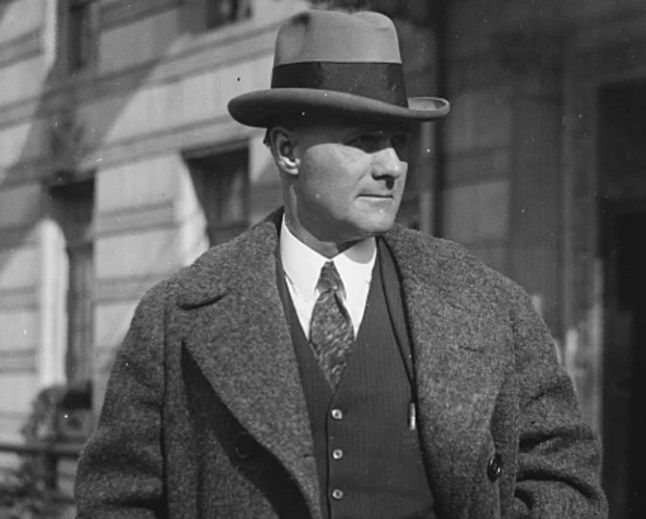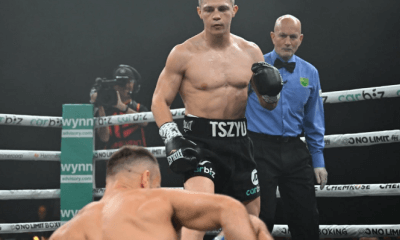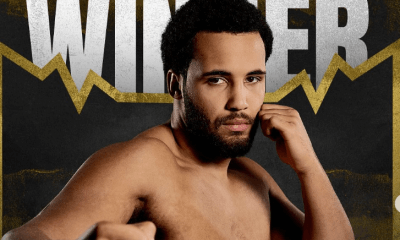Featured Articles
Tex Rickard Planted the Dempsey – Willard SuperFight in Toledo: Here’s Why

This coming July 4th marks the 100th anniversary of the Dempsey-Willard fight. More than a big fight, Dempsey vs. Willard came to be seen as the first big bang in the Golden Era of Sports, an era that eventually became synonymous with the Roaring 20s.
The fight was the handiwork of George “Tex” Rickard. America’s first great boxing promoter, Rickard had come to the fore in Nevada, first in 1906 in the boomtown of Goldfield where he was the chief architect of the lightweight title fight between Joe Gans and Battling Nelson, and then four years later in Reno where he manufactured (and refereed) a more historic event, the heavyweight championship fight between Jack Johnson and former title-holder James J. Jeffries.
Rickard’s third successful promotion was the March 25, 1916 heavyweight title fight between Jess Willard and Frank Moran at Madison Square Garden. Willard had dethroned Johnson the previous year, stopping the Galveston Giant in the 26th round at a thoroughbred track on the outskirts of Havana. The gate receipts for Willard-Moran, Willard’s first title defense, were $151,254, the second-highest on record (surpassed only by Johnson-Jeffries at Reno), earning Rickard and his partners a tidy profit.
The fight would have produced an even larger gate if not for legal restraints. For one thing, the law then in effect in New York restricted fights to 10 rounds and outlawed official decisions. There were no judges and the referee lacked the authority to declare a winner. Bets were decided by designating a scorekeeper – typically a ringside reporter for a local paper – in the event that both combatants were still standing at the final bell.
The no-decision rule was hardly indigenous to New York. It was implanted in many other places during the first decade of the century when a wave of reform swept the land, devitalizing if not outright banning such “vices” as prizefighting and horse racing. Among other things, the rule was an incentive for champions to lollygag through title defenses as they could only lose their belt in the event of a knockout. Title fights were too often snoozers, an irritant that prevented boxing from reaching its full potential as a spectator sport.
After defeating Frank Moran, Willard sat on the title for three years, raking in big bucks in personal appearances that were often arranged in conjunction with a Wild West show. White folks flocked to see the champion pugilist of the world, the Kansas cowboy who had given the reviled Jack Johnson his comeuppance. And late in Willard’s decampment, Jack Dempsey shot out of the West like a comet, turning heads with a slew of fast knockouts. The high point was a 23-second blast-out of favored Fred Fulton on July 27, 1918 at a ballpark in New Jersey. Fulton, the Minnesota Plasterer, out-weighed Dempsey by 20 pounds.
It was clear that a fight between Willard and Dempsey would be a much bigger event than the Willard-Moran fight. But where to put it?
Ideally, it would bubble forth in a heavily populated area but New York was out as were Chicago and Philadelphia as the law in both jurisdictions mandated no-decision bouts no longer than six rounds. Forget San Francisco or, for that matter, anywhere else in California. In 1914, the voters approved a referendum that placed all boxing, amateur and professional, on the amateur plane, thereby restricting pro fights to four rounds.
The last remnant of old-time gloved fighting in the U.S. was found in New Orleans where the ceiling was 20 rounds. Rickard briefly considered placing Willard-Dempsey there but backed off because of climatic considerations; it figured to be awful hot and humid in New Orleans on the 4th of July. True, the weather figured to be hot almost everywhere (and, as it turned out, it would be wickedly hot in Toledo), but Rickard was playing the percentages.
—
A community that wanted to host an important prizefight had to satisfy certain conditions. Foremost, the local organizers had to be willing to defray some of the promoter’s expenses. A big fight was a shot of adrenaline for a stagnant economy. Fight goers were conventioneers, of a sort, and had shown themselves to be the best kind of conventioneers; free spenders.
The spearhead of Toledo’s local organizing committee was Addison Thatcher. A gym operator and small-time boxing promoter, Thatcher had a thriving business that salvaged scrap metal from ships that went down in Lake Erie. A future Toledo mayor (running under the slogan “Feed the Poor and Don’t Ask Any Questions”) and a future failed candidate for Governor of Ohio, Thatcher was a man with considerable clout.
Through his sway, the city fathers agreed to put a 60-acre municipal park at Rickard’s disposal for his big wooden open air arena, leveling the ground where necessary to eliminate some of the prep work for Rickard’s construction engineers. (Addison Thatcher wasn’t motivated entirely by a sense of civic duty. He planned to cash in on the big fight by converting an empty warehouse into a dormitory and purportedly purchased 1,500 cots for this purpose.)
Equally important if taking a big fight into the hinterland (and from the standpoint of a New Yorker, anything west of Philadelphia was the hinterland), the place had to be easily accessible by rail. Chicago was America’s railroad hub and Rickard would eventually plant a big fight there (after the Illinois boxing law was liberalized to allow 10-round fights), but Toledo wasn’t too far behind. In fact, by some accounts, Toledo – roughly 55 miles from Detroit, less than 100 miles from Cleveland, and less than 200 miles from Cincinnati or Indianapolis — ranked second only to Chicago in passenger rail traffic. There were also ferries connecting Toledo to various points in Ohio and Michigan and to Windsor, Ontario, Canada, a short hop across the lake.
Another pre-condition, although this less overt, had to do with the culture. No out-of-town promoter would risk planting a big prizefight in a city with a distinct Victorian tone as he would inevitably butt heads with a strong anti-prizefighting lobby. Toledo wasn’t as libertine as New Orleans, or Denver for that matter, but it was relatively wide open, housing the most notorious red light district in all of Ohio. In the words of Ohio journalist Vince Guerrieri, Toledo appealed to Tex Rickard for its “moral flexibility.”
—
The Willard-Dempsey promotion turned a profit, but it was far less than what Rickard and his backers anticipated. The paid attendance was 19,650 in an arena built to house four times that number. The national heat wave and reports of price gouging by Toledo’s hotels and restaurants served to depress the turnout. But Jack Dempsey, a cruiserweight by today’s standards, slaughtered the six-foot-six, 245-pound Willard in such a spectacular fashion that he increased his stature a thousand-fold and Tex Rickard was off and running, soon to piggyback Dempsey into great spectacles that gripped the nation. (To illustrate what a big star Dempsey became, both of New York’s National League baseball teams postponed their home games on the day of Dempsey’s first fight with Gene Tunney in deference to it. An estimated 50,000 New Yorkers made the trek to Philadelphia to see the fight in person.)
It was the Golden Era of Sports, the Age of Wonderful Nonsense, and it dawned in the city of Toledo 100 years ago this Thursday. And let me take this opportunity to wish everyone a happy 4th of July.
Check out more boxing news on video at The Boxing Channel
To comment on this story in The Fight Forum CLICK HERE
-

 Featured Articles4 weeks ago
Featured Articles4 weeks agoThe Hauser Report: Zayas-Garcia, Pacquiao, Usyk, and the NYSAC
-

 Featured Articles3 weeks ago
Featured Articles3 weeks agoOscar Duarte and Regis Prograis Prevail on an Action-Packed Fight Card in Chicago
-

 Featured Articles2 weeks ago
Featured Articles2 weeks agoThe Hauser Report: Cinematic and Literary Notes
-

 Book Review2 weeks ago
Book Review2 weeks agoMark Kriegel’s New Book About Mike Tyson is a Must-Read
-

 Featured Articles4 weeks ago
Featured Articles4 weeks agoRemembering Dwight Muhammad Qawi (1953-2025) and his Triumphant Return to Prison
-

 Featured Articles7 days ago
Featured Articles7 days agoMoses Itauma Continues his Rapid Rise; Steamrolls Dillian Whyte in Riyadh
-

 Featured Articles3 weeks ago
Featured Articles3 weeks agoRahaman Ali (1943-2025)
-

 Featured Articles3 weeks ago
Featured Articles3 weeks agoTop Rank Boxing is in Limbo, but that Hasn’t Benched Robert Garcia’s Up-and-Comers



















